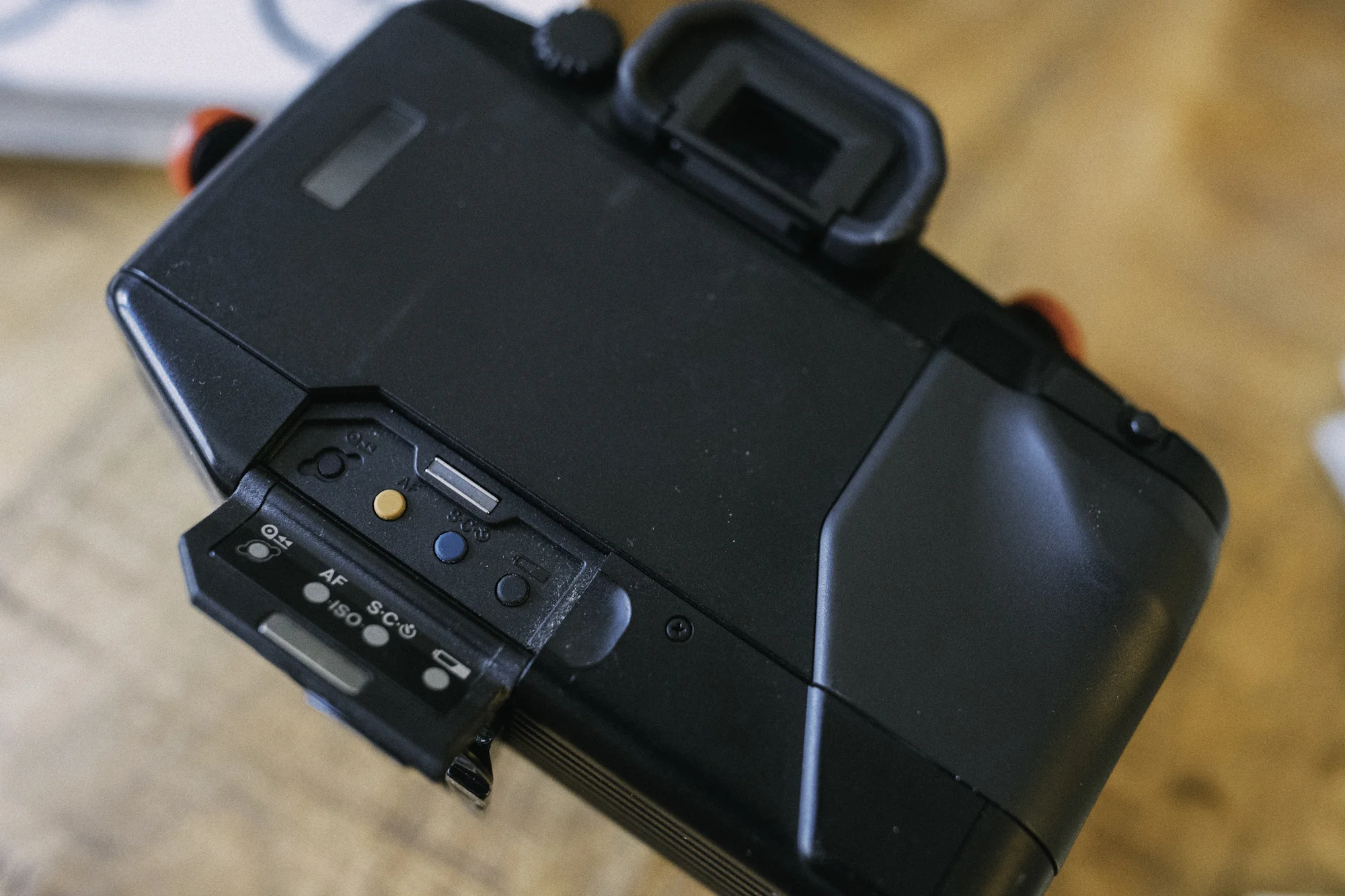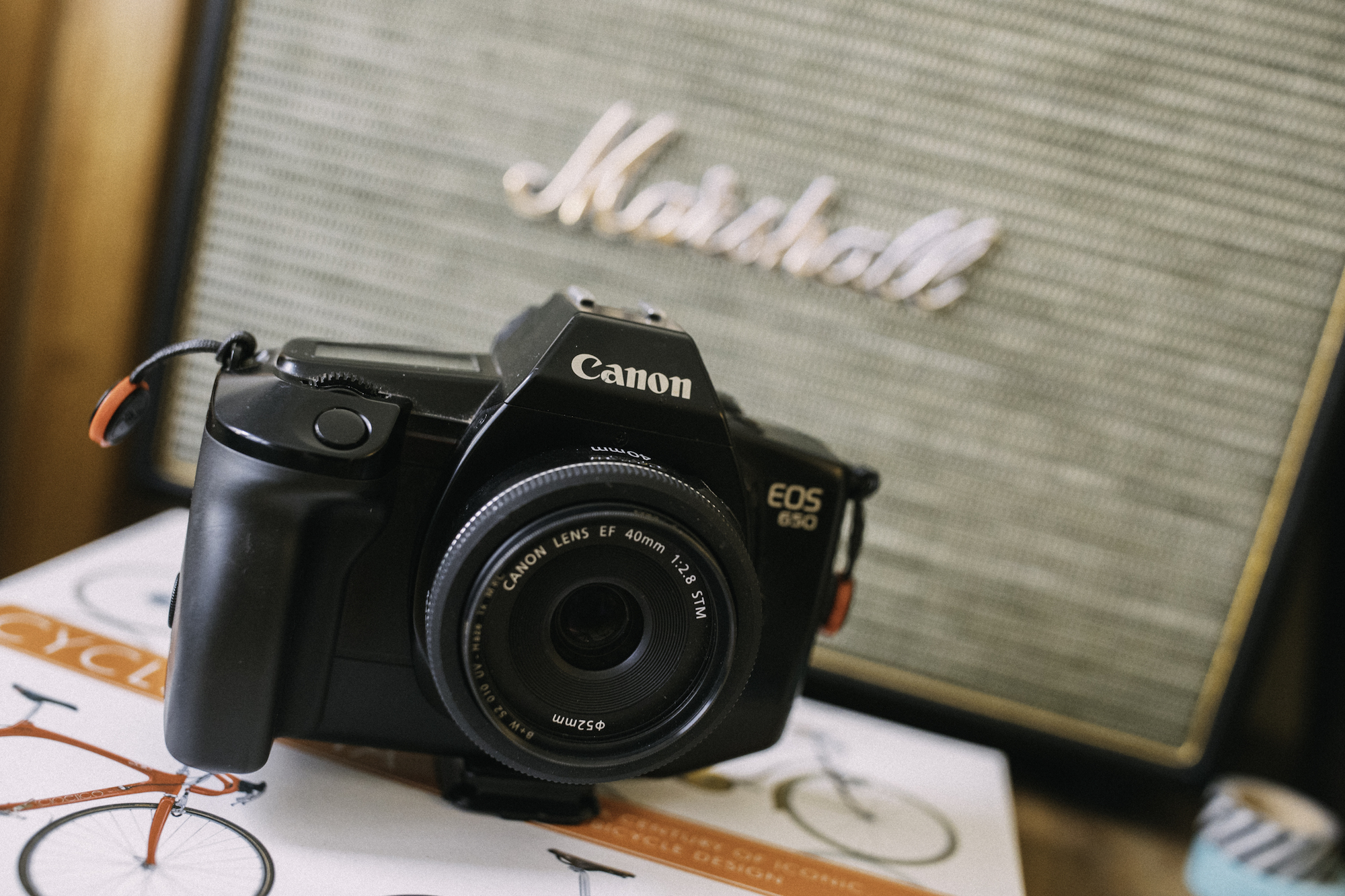Canon EOS 650 - Review of the First EF Camera
The Canon EOS 650 launched the EOS line and the EF mount. Although you don't hear much about it today, it's certainly part of camera history and holds up well for modern use.
Usually when people think or talk about classic cameras, the usual few come up. Usually a couple Leicas make the list, perhaps a Nikon or two, maybe a Minolta here or there. Usually, those conversations will note a Canon here or there, but usually they gloss over the Canon EOS 650. Is that enough usually's?
Now the 650 isn’t classic in the traditional sense. It isn't particularly robust, it doesn't really set itself apart from those that came after it, and the features aren’t really all that spectacular in our modern age. Despite all of this, I believe the EOS 650 stands to be considered "classic" for one reason in particular: it launched the most ubiquitous lens mount in use today.
Now it isn’t coincidental that I’m bringing you this camera when I am. With all of the rumors surrounding the future of the Canon EOS line, and the launching of the first full-frame Canon mirrorless (everybody’s jumping on the train now), I found it fitting to take a look back at the camera that launched the EOS line, and more specifically, the EF mount that we all know and love today. Moreover, I was in a camera store in Tempe, Arizona, just last week and happened to stumble upon a 650 sitting on the shelf, waiting for me to pick it up. So purchase I did! Let’s jump into the history of this fun little camera.
The EF Mount
Now today the EF mount is found on everything from high end cinema cameras (Arri, RED, Blackmagic, and more all release cameras in this mount), to high end DSLR’s, to film SLR’s. In fact, to the best of my knowledge, the EF mount has the most native lenses of any mount currently offered. There are a few reasons for this. First of all, Canon is the largest camera manufacturer in the world. When you make that quantity of cameras, you have demands from every type of photographer out there.
Additionally, the lens mount is popular because of its design; a larger opening than most rivals allows for faster lenses (you don’t see Nikon sporting a 50mm f/1.2 with autofocus, do you?), as well as providing more stability for larger lenses. It was the best lens mount when it launched, and among the best today. But Canon wasn’t always in the lead when it came to lenses and the mount they called their own. In fact, their current dominance occurred because of a gamble…a gamble that could have taken the company down, but instead made them the most popular camera company in the world.
The Canon T90 was the last professional camera to sport the FD lens mount.
Back in 1986, Canon was doing fine. They had a diverse product line (for the time), and everything on the outside seemed to be business as usual. The T90 had also just been released, renewing Canon’s commitment to the FD line of lenses. At least that's what everyone thought. You see, behind the scenes, Canon was preparing the largest gamble it had made up until that point.
Back in 1986, autofocus technology wasn’t exactly widespread. Leica had invented it (then abandoned it), and others had released autofocus cameras, but it wasn’t seen as a viable option for pros. Pro’s knew how to manually focus, and at least then they knew the image is in focus, rather than hoping and praying the hacked on autofocus systems of the day would be accurate. Autofocus was an prosumer’s game at best, and a low-level consumer’s game at worst.
As a large camera manufacturer, Canon had a devoted following of shooters invested in its equipment, and particularly its established FD lens line, but Canon wasn’t content to live in the moment. They were at a crossroad...a point at which they had to determine how to implement autofocus into their lineup. How seriously would they take it? Would it actually stick or be a short-term fad? While they could have taken a conservative approach, Canon was looking toward the future, and more importantly, they were looking to be #1. Canon had the tenacity to take a tremendous risk and embrace the new technology, tune it to perfection, and forge a new pathway in professional photography.
This wasn’t an easy decision to make. You see, professionals aren’t in the habit of accepting change easily, and for good reason. When you’re in the heat of the moment, with one opportunity to get the career-making money shot, the last thing you want to rely on is equipment with which you’re unfamiliar. Furthermore, professionals invest. They invest in cameras, but more importantly, they invest in lenses...lenses that often cost much more than the camera body. Switching lens mounts means switching everything...and I do mean everything. So when autofocus came about, there were two paths a company could take: modify their existing lens mount (which hadn’t been designed for autofocus), or start anew.
Canon makes a crazy amount of glass. Today there are more lenses made for the EF mount than any other lens mount.
There were benefits (and negatives) to both. If the company chose to modify their existing lens mount, they allowed professional photographers to keep their existing lenses. This left little reason to switch systems or abandon the company for greener pastures. On the other hand, keeping the same lens mount meant modifying something that left little room for alteration. This usually resulted in poor performance and a variety of issues (including a lack of compatibility between generations of lenses and camera bodies, such as has plagued Nikon for years). The counter decision didn’t leave many brighter options. Starting with a brand new mount might give you better technology and a leg up on the competition, but it would also likely anger professionals who would now have to switch systems anyway, and might just decide to swap companies instead of just lens mounts.
At the time, Nikon was #1 with the pros. If you were shooting 35mm seriously (and didn’t have a Leica), you were shooting Nikon. Canon was second at best. Likely because of their lead, Nikon chose the first option. In fact, while there are many compatibility issues between different lens generations and camera bodies, nearly any Nikon F-mount lens since 1959 can attach to any Nikon F-mount camera body and function to some degree. This is one reason many people prefer Nikon...there is a huge history of F-mount lenses, and they’re still being manufactured today.
As I’m sure you’ve gathered by now, Canon took route #2. Making a gamble that could have sunk the company, Canon decided to scrap their FD mount, and start anew with the “Electro-Focus” mount (EF for short). With a large opening to accommodate fast lenses (the largest available at the time), a short flange distance allowing users to adapt other lenses to the EF bodies, electrical contacts for the camera body to communicate with an in-lens motor (a new approach, and something that Nikon rejected for a while), this was a mount for the future.
Brand New Camera, Brand New Lenses
Enter the Canon EOS 650 remains a highly capable camera to this day. It doesn't look that outdated either!
But you can’t just announce a mount without announcing a camera body and lenses. Here enters the EOS 650. Announced in 1987, the 650 was the very first camera to sport the EF mount. It was released alongside 17 lenses, including a landmark 50mm f/1.0 which garnered a great deal of press. The camera lasted about a year before a slightly updated 620 was released.
Fast forward to today, and you can still find 650s if you look for them on eBay. But how well does an electronic camera of that age hold up in the modern day? Pretty well, actually.
By modern standards, the 650 isn’t a remarkable camera by any stretch of the imagination, but it does contain everything you need, and nothing you don’t. The camera body itself is a high-quality plastic, with a metal lens mount. It doesn’t feel cheaply made, however, and I’m convinced it could stand up to a fair amount of abuse. Ergonomics are decent, and the camera actually feels solid in the hand. Compared to the Canon 1V, which I also have the pleasure of owning, it feels much lighter and smaller. Depending on your preferences, this may not be a bad thing. It certainly isn't as robust as the 1V, lacks weather sealing and a fair amount of features, but for the average photographer, I don't think you'll notice what it lacks.
On the left sits the Canon 1V, my EOS SLR of choice, and a robust tank. The 650 is smaller and not quite as robust, but still stands up to the daily grind.
When I saw the camera on the shelf in the camera store, I asked for a lens to try it out. I didn’t expect much in the way of autofocus, but it actually held up well. In decent lighting, it surprised me how well the 30-year-old camera held up, focusing quickly and accurately. When I ran a test roll through the camera, I did find that it had some difficulty focusing on back-lit subjects or in strenuous lighting circumstances, such as dawn or dusk while shooting toward the sun. If you can deal with these quirks, (and maybe switch to manual focus every now and then), the rest of the camera functions well. Autofocus is also only center-framed, although this is how I usually prefer to shoot. It sports a “green square” fully auto mode (which I loathe, but some might find reassuring), aperture priority, shutter priority, full manual, program auto, and a mode that turns on a beep when focus has been reached (it’s great for annoying those around you). All of this is adjusted by a small wheel to the left of the viewfinder.
Film auto-advances (as one would expect for an EOS camera), and auto rewinds when you’ve reached the end of your roll. Shots are limited to the stated amount on the DX coding (the camera will auto-set the ASA/ISO from this DX coding as well). The viewfinder is also big and bright with 94% coverage, and interestingly enough, the eyecup is the same still used on the 5D Mark IV. Under a small plastic flap on the back, one finds a few small functions, including a film-rewind button, single/continuous/timer controls, and a battery check button. You can also manually set the ISO.
On the front of the camera, there is a lens release button, depth of field preview, and a manual exposure adjustment button. Matrix metering (six-segment evaluative) is default on the camera, although you can switch to spot metering if you want. Metering is fantastic and definitely holds up well compared to modern models. Flash sync is 1/125, which isn’t great, but should do for lots of situations. It runs off or a 2CR5 battery which is good for around 100 rolls, and slides into the side of the grip after you loosen the screw.
Here's the open back of the 650. If you buy one, be sure to ask to see the shutter. EOS cameras from this era have a problem with sticky shutter. Black goo on the shutter will give it away.
As a whole, I enjoyed shooting with the 650. Aside from occasionally cringing at the missed autofocus, the camera did exactly what a good camera should do...get out of the way. With the limited controls, I never felt as though I should be adjusting something or tweaking something else. It just felt right. On the other side, I never felt like I needed more controls. Everything I use and find a necessity is there, it just doesn’t sport unnecessary functions beyond that.
Something I will note is image quality. One great thing about film is that no matter how old the camera is, image quality will always depend upon two things: the quality of your glass, and the quality of your film. In the end, all the camera is is a light-tight box that holds both of those. Because of this, image quality from this $100, 30-year-old camera is stellar. Shooting mostly on a Canon 35mm 1.4 II, I was incredibly pleased with what I got back, and found it impossible to tell the difference between images taken in the 650 and the much newer Canon 1V. For a fraction of the price, I was capturing stunning images. It did everything I needed it to.
If you’re shooting on a nicer Canon EOS film camera and want a companion camera, have a lot of EF glass and want to get into shooting film, or just want to hit the ground running with an incredibly capable EOS film camera for a cheap price (and a fair amount of history), this camera is for you. It may not have the bells and whistles of some of the more advanced EOS cameras, but ask yourself if you really need those. If you’re simply looking for autofocus, a combination of auto and manual controls, and access to some of the best lenses in the world, you don’t really need much more. In my opinion, it feels like a well-rounded family camera to me. It isn't nice enough to warrant worrying about every bump and scrape, but it isn't so low enough quality to cause issues with image capture or be prone to failure. It provides autofocus for those short family moments that you just can't miss, and is small enough to take on family trips without feeling the weight. I might just keep this one in my go-to bag, and while I plan to train my son on a manual film camera, perhaps it will be my son's first EOS film camera. We'll have to see when the time comes.
In the end, whatever Canon chooses to do with their lens mount...whether they keep the EF mount going for years to come or kill it off in a few years once mirrorless becomes more profitable, the EF mount has had a fantastic run. Bridging the gap from film to digital, Canon's still-popular mount gives us the opportunity to shoot high end film cameras with high end modern lenses. Often those of us shooting film feel as though the only way to properly shoot this medium is with a fully manual camera. While this certainly maintains the authenticity of the artform, sometimes I (and perhaps you too?) want the experience of shooting film in a modern camera with modern glass, with the speed, crispness, and accuracy that they often bring.
I certainly won't be trading in my Nikon F3 any time soon, or switching from the fully manual cameras that I do carry, but I will say that I thoroughly enjoyed shooting the 650. It may not have the "old-world charm" of the others, but it offers something they don't: autofocus. And sometimes, ya just gotta have it (commence the stone throwing now).
Here's the top of the camera. Pretty sparse, but gives you just what you need. The dial (currently set on L for "lock") controls on/off and which setting you choose to shoot in.
Here's the back of the camera. Almost nothing to see here. There's a film door to show what you have loaded, and a couple buttons.
Here are a few hidden buttons. They control film rewind, manual selection of ISO, Autofocus mode, single/continuous/timer shooting, and battery level indicator.
Here's the camera front. It may not have the curves of the 1V, but it still looks relatively modern today.










